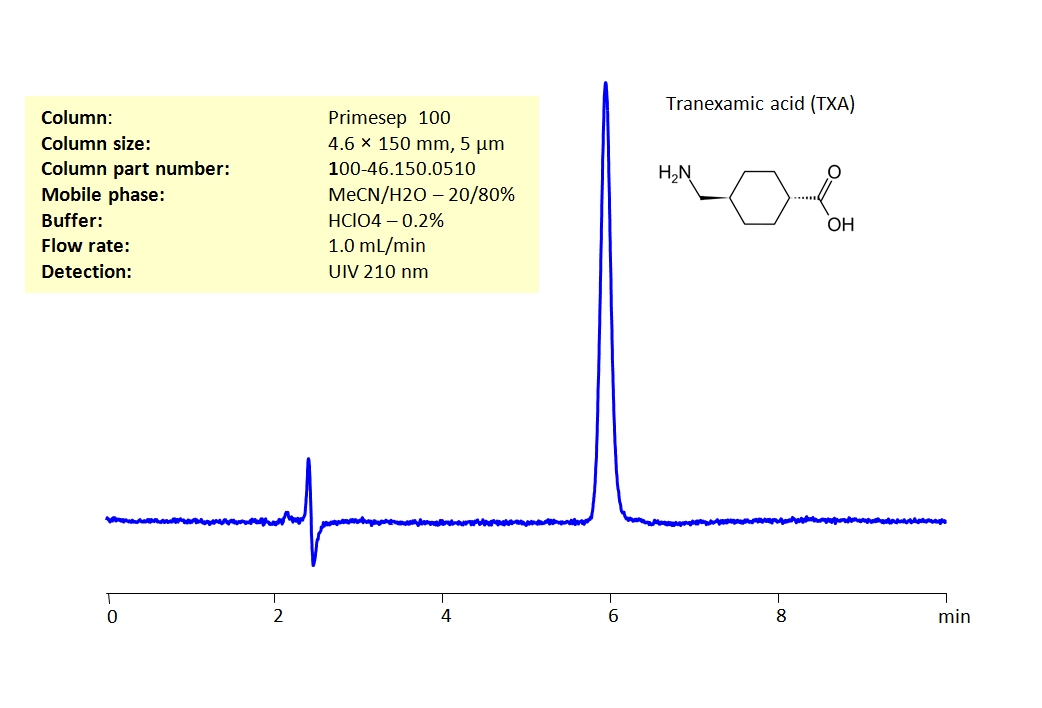HPLC Method for Analysis of Tranexamic acid on Primesep 100 by SIELC Technologies

Tranexamic acid (TXA) is a synthetic derivative of the amino acid lysine. It is a medication used to treat or prevent excessive blood loss from major trauma, surgery, tooth removal, nosebleeds, and heavy menstruation. It is also used for hereditary angioedema. It can be taken by mouth, injected into a vein, or applied topically.
Tranexamic acid works by inhibiting the activation of plasminogen to plasmin, an enzyme that degrades fibrin clots, fibrinogen, and other proteins in the extracellular matrix. By inhibiting the activation of plasmin, tranexamic acid stabilizes clots and reduces bleeding.
Tranexamic acid can be retained on a Primesep 100 mixed-mode column with embedded acidic ion-pairing groups, having great peak shape using an isocratic method of acetonitrile (ACN), water and perchloric acid (HClO4) as a buffer. UV Detection 210nm.
| Column | Primesep 100, 4.6 x 150 mm, 5 µm, 100 A, dual ended |
| Mobile Phase | MeCN/H2O – 20/80% |
| Buffer | HClO4 – 0.2% |
| Flow Rate | 1.0 ml/min |
| Detection | UV 210 nm |
| Class of Compounds | Acid, Drug |
| Analyzing Compounds | Tranexamic acid |
Application Column
Primesep 100
Column Diameter: 4.6 mm
Column Length: 150 mm
Particle Size: 5 µm
Pore Size: 100 A
Column options: dual ended





